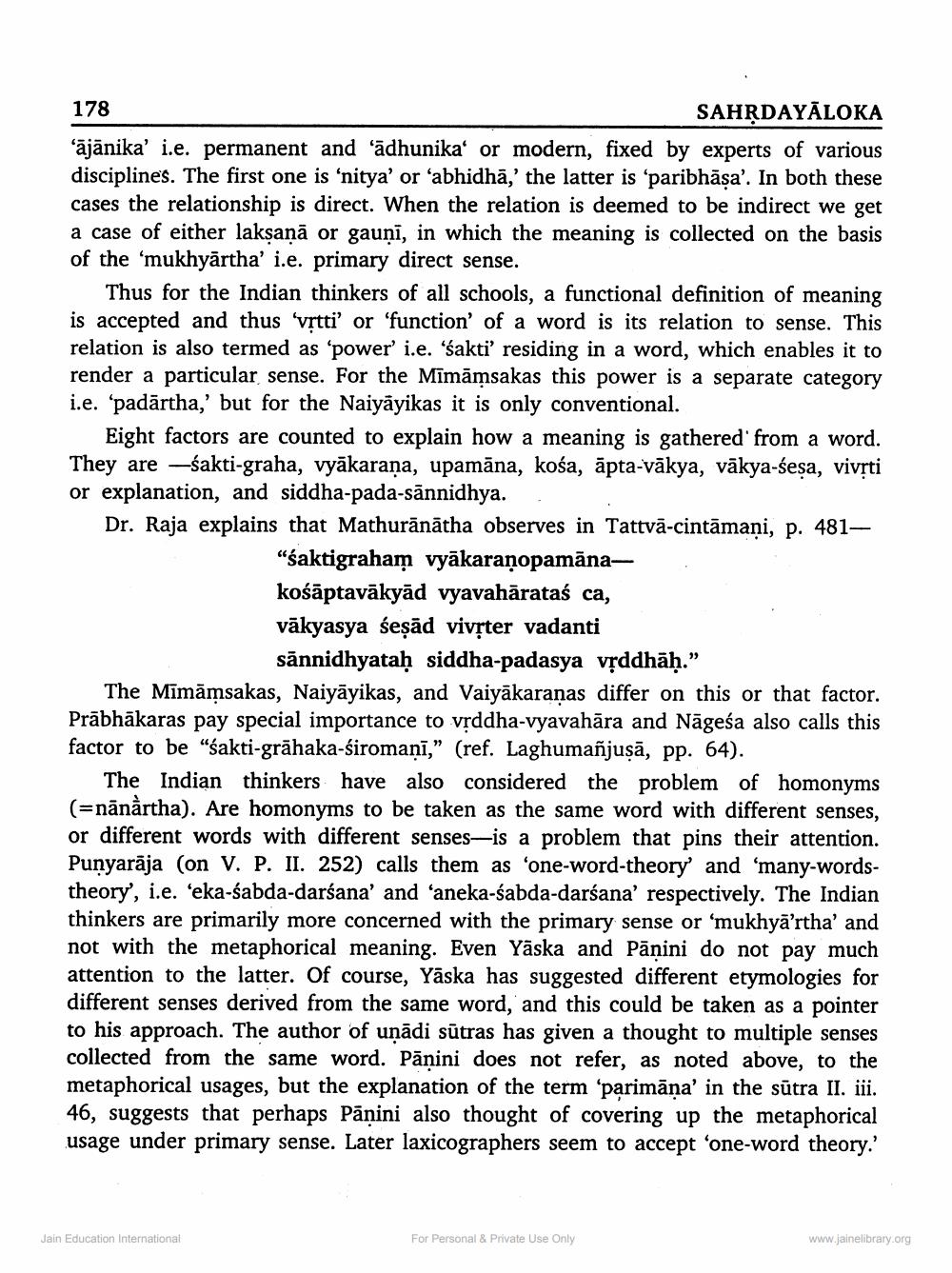________________
178
SAHRDAYĀLOKA
'ājānika' i.e. permanent and adhunika' or modern, fixed by experts of various disciplines. The first one is 'nitya' or 'abhidhā,' the latter is ‘paribhāsa'. In both these cases the relationship is direct. When the relation is deemed to be indirect we get a case of either lakṣaṇā or gauņi, in which the meaning is collected on the basis of the 'mukhyārtha' i.e. primary direct sense.
Thus for the Indian thinkers of all schools, a functional definition of meaning is accepted and thus 'vrtti' or 'function of a word is its relation to sense. This relation is also termed as 'power' i.e. 'sakti' residing in a word, which enables it to render a particular sense. For the Mīmāmsakas this power is a separate category i.e. 'padārtha,' but for the Naiyāyikas it is only conventional.
Eight factors are counted to explain how a meaning is gathered from a word. They are —Śakti-graha, vyākarana, upamāna, kośa, āpta-vākya, vākya-śesa, vivrti or explanation, and siddha-pada-sannidhya. Dr. Raja explains that Mathurānātha observes in Tattvā-cintāmaņi, p. 481
"Śaktigraham vākaraṇopamānakośāptavākyād vyavahārataś ca, vākyasya śeșād vivộter vadanti
sānnidhyataḥ siddha-padasya vệddhāḥ.” The Mīmāmsakas, Naiyāyikas, and Vaiyākaraṇas differ on this or that factor. Prābhākaras pay special importance to vrddha-vyavahāra and Nāgeśa also calls this factor to be "sakti-grāhaka-siromanī," (ref. Laghumañjusā, pp. 64).
The Indian thinkers have also considered the problem of homonyms (=nānårtha). Are homonyms to be taken as the same word with different senses, or different words with different senses—is a problem that pins their attention. Punyarāja (on V. P. II. 252) calls them as 'one-word-theory' and 'many-wordstheory', i.e. Weka-sabda-darśana' and 'aneka-sabda-darśana' respectively. The Indian thinkers are primarily more concerned with the primary sense or ‘mukhyā'rtha' and not with the metaphorical meaning. Even Yāska and Pānini do not pay much attention to the latter. Of course, Yāska has suggested different etymologies for different senses derived from the same word, and this could be taken as a pointer to his approach. The author of uņādi sūtras has given a thought to multiple senses collected from the same word. Pānini does not refer, as noted above, to the metaphorical usages, but the explanation of the term “parimāna' in the sūtra II. iii 46, suggests that perhaps Pāṇini also thought of covering up the metaphorical usage under primary sense. Later laxicographers seem to accept 'one-word theory.'
Jain Education International
For Personal & Private Use Only
www.jainelibrary.org




